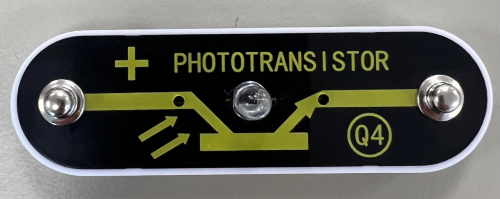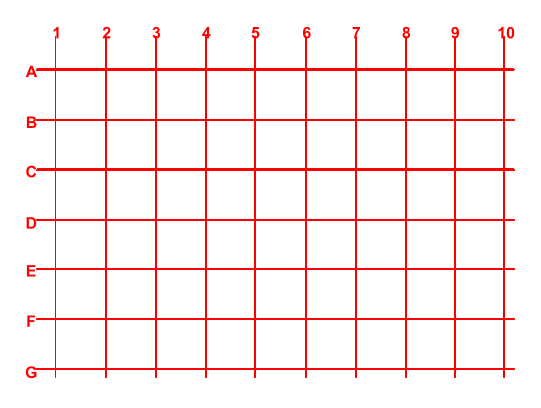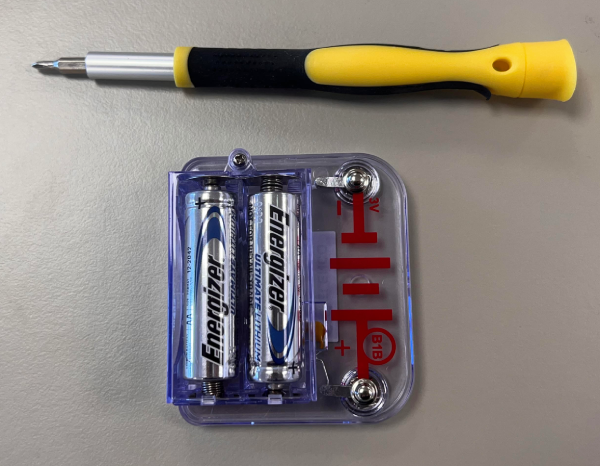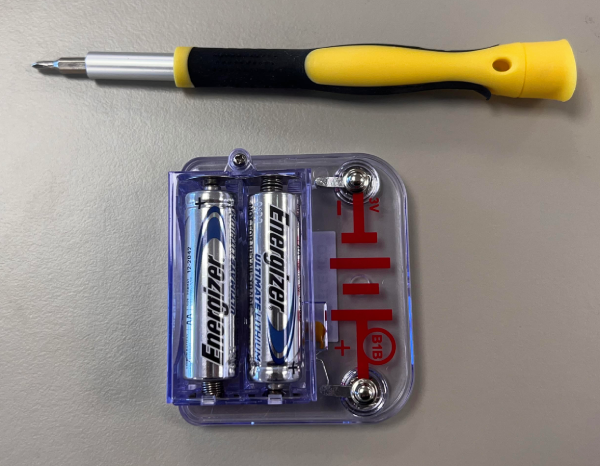Today, we are going to learn about phototransistors and what they do.
Explain to your students that today we will be using the phototransistor block (Q4). A phototransistor is a special part that can see light. When it sees light, it turns things on in the circuit, like a light switch that works by seeing instead of by touching.
Instruct your students to place the base grid on a flat, stable surface. Make sure each group has enough space to work comfortably. This is an important step to ensure the stability of the snap circuits they will build.
At this stage, we need to ensure that the batteries are in the battery holder. If they are not already there, please insert them now. Each Snap Circuits set you are using will need its own set of batteries. So, if you are using multiple sets, make sure each one has its batteries properly inserted in the battery holder. This is crucial for the functioning of the circuits we will be building.
To power your Snap Circuits you will need to put two AA batteries into the battery holder. To do this you will need a small Phillips head screwdriver.
First, unscrew the battery holder (B1) using the screwdriver. Next, insert the two AA batteries into the holder, making sure to follow the direction (positive and negative) indicated inside the holder.
Once the batteries are properly placed, screw the battery holder back together. Remember, safety first! Always handle batteries and tools carefully.
Now, let's place the battery holder on our base grid. Tell your students to find the spot marked as C4 on the grid, this is where we will place the battery holder (B1).
Once they have placed the battery holder correctly, they should press it gently to snap it into place.
Now let's put in the number 3 wire. Instruct your students to find the number 3 wire block. They need to connect one end of the wire block to the point C2 on the grid and the other end to E2. Make sure the wire block snaps into place securely.
.gif)





.png)
.png)
.png)
.png)